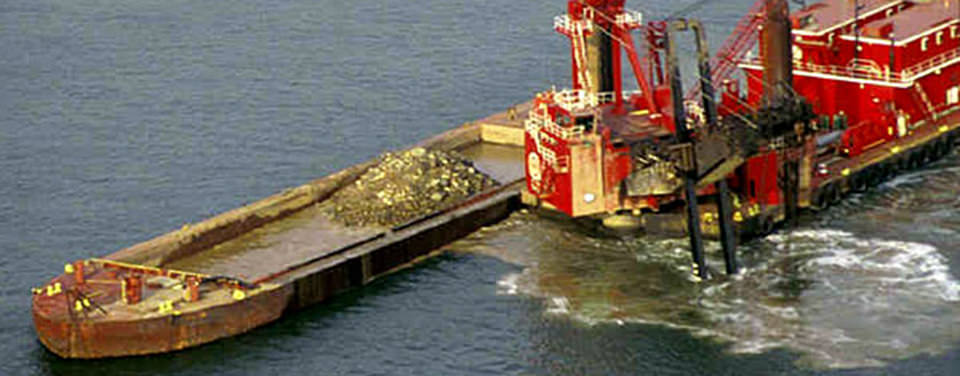What is dredging?
Dredging is the act of removing silt and other material from the bottom of bodies of water

As sand and silt washes downstream, sedimentation gradually fill channels and harbors. This material must be periodically removed by dredging.
Dredging is the removal of sediments and debris from the bottom of lakes, rivers, harbors, and other water bodies. It is a routine necessity in waterways around the world because sedimentation—the natural process of sand and silt washing downstream—gradually fills channels and harbors.
Dredging often is focused on maintaining or increasing the depth of navigation channels, anchorages, or berthing areas to ensure the safe passage of boats and ships. Vessels require a certain amount of water in order to float and not touch bottom. This water depth continues to increase over time as larger and larger ships are deployed. Since massive ships carry the bulk of the goods imported into the country, dredging plays a vital role in the nation's economy.
Dredging is also performed to reduce the exposure of fish, wildlife, and people to contaminants and to prevent the spread of contaminants to other areas of the water body. This environmental dredging is often necessary because sediments in and around cities and industrial areas are frequently contaminated with a variety of pollutants. These pollutants are introduced to waterways from point sources such as sewer overflows, municipal and industrial discharges, and spills; or may be introduced from nonpoint sources such as surface runoff and atmospheric deposition. NOAA's Office of Response and Restoration plays a major role in protecting and restoring marine natural resources when environmental damage occurs.
The disposal of dredged material is managed and carried out by federal, state, and local governments, as well as by private entities such as port authorities. The U.S. Army Corps of Engineers issues permits for the disposal of dredged material; the U.S. Environmental Protection Agency provides oversight and authorization for the disposal of dredged materials.